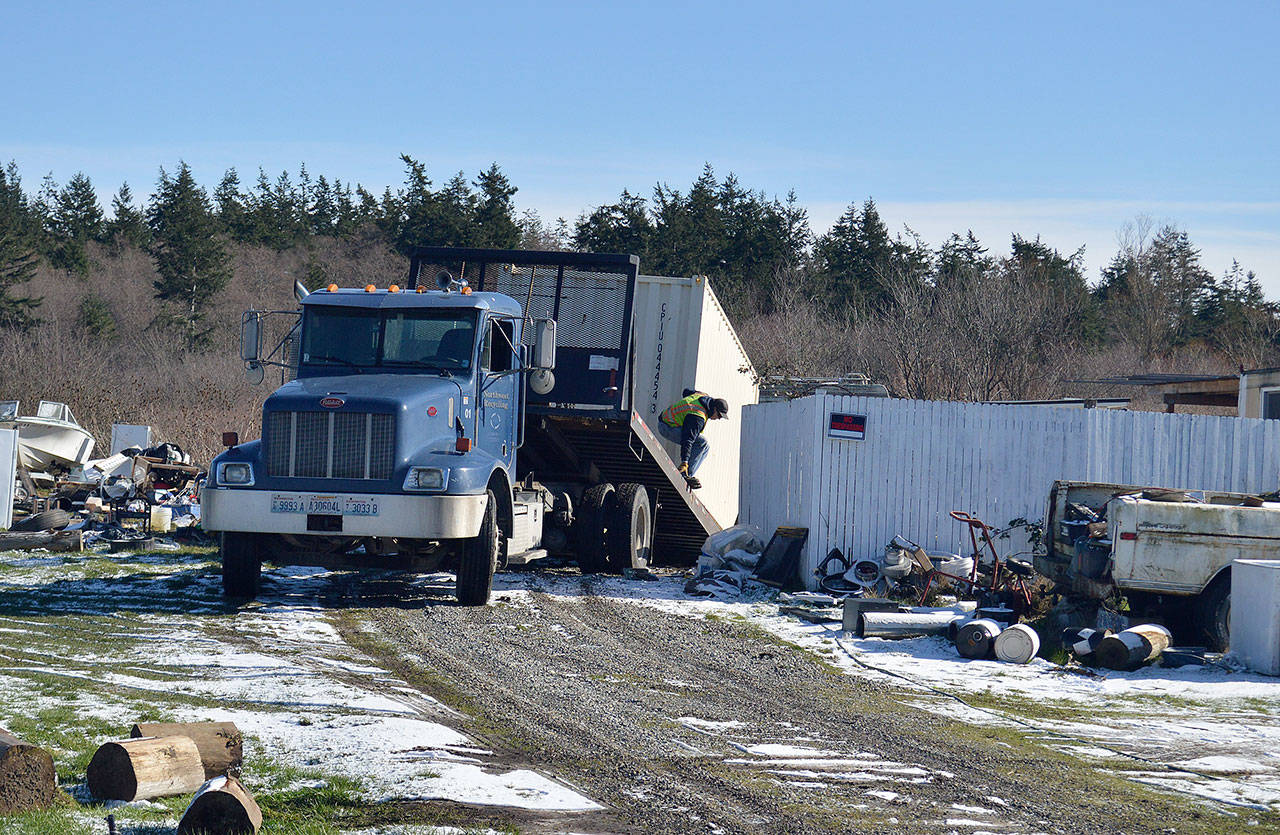There are still junked cars, squatters, failed septic fields and other violations of Island County code, but recent changes have significantly improved the planning department’s effectiveness in dealing with these cases.
“I think we’re moving in the right direction,” said Planning Director Hiller West.
In July, a number of different departments, including public health and human services, were directed to coordinate efforts better to deal with a backlog of 80 open cases that planning had at the time. Other departments became involved as well. The prosecuting attorney’s office now holds training on building case files, providing notices, documenting notices and what should be done if cases go to court.
“Even with the 25 years of experience I have in this line of work, I always like to learn new stuff,” said John Brazier, code enforcement planner.
He said he’s found the training helpful and felt the department has improved its communication and collaboration with other departments. The 80 open cases from July have all been addressed, which has allowed a faster turnaround time between receiving a complaint and responding, he said.
The hiring of a second code enforcement planner, Sonja Bratz, also helped with the timeliness of dealing with cases, he said. Brazier covers Camano Island and North Whidbey while Bratz oversees south of Oak Harbor, he said.
“I think the organization is better, the response is better,” said West. “…We’re following up with cases more effectively, and we’re following up in a better way.”
Brazier said now he is usually able to respond to a complaint within 24 hours. Officers from the sheriff’s office will go if there are drugs involved. Public health personnel look at cases in which people are living on properties with no functioning septic or drain system, but most cases involve an accumulation of solid waste, according to Public Health Director Keith Higman.
Solid waste can refer to anything that won’t be recycled and has gone “beyond its life and what it was designed to do,” he said.
Brazier said the planning department has recently started holding meetings to develop plans to handle situations involving homeless populations living in wooded areas.
When public health encounters those situations, it’s important to remember most of the individuals involved don’t have another place to go; county ordinances can’t necessarily be enforced in a “black and white” manor, Higman said.
“There’s a human side to that too,” he said.
The primary goal becomes to make sure the people are living in as sanitary conditions as possible. He said in one case an employee who had been in the Peace Corps was able to teach a group of people how to build a sanitary latrine to use. Mental health professionals are also brought in to assist in these types of situations as well.
Brazier said there have been preliminary discussions around creating a small fund to help the people and cleanup the sites, but nothing was set in stone.
But for property owners in violation of codes, the onus is on them to pay for solid waste removal. This can result in some hostility from the violators toward county officials, he said. The rural nature of the county can result in people collecting more on large pieces of property.
“These people live out here so far, I think they think one’s paying attention,” Brazier said.
However, among public health and environmental concerns, he said many of the codes are in place to ensure Whidbey Island continues to be a desirable place to visit and live.
“The codes are here for a reason,” he said. “Let’s face it, we live in a beautiful part of the state.”



